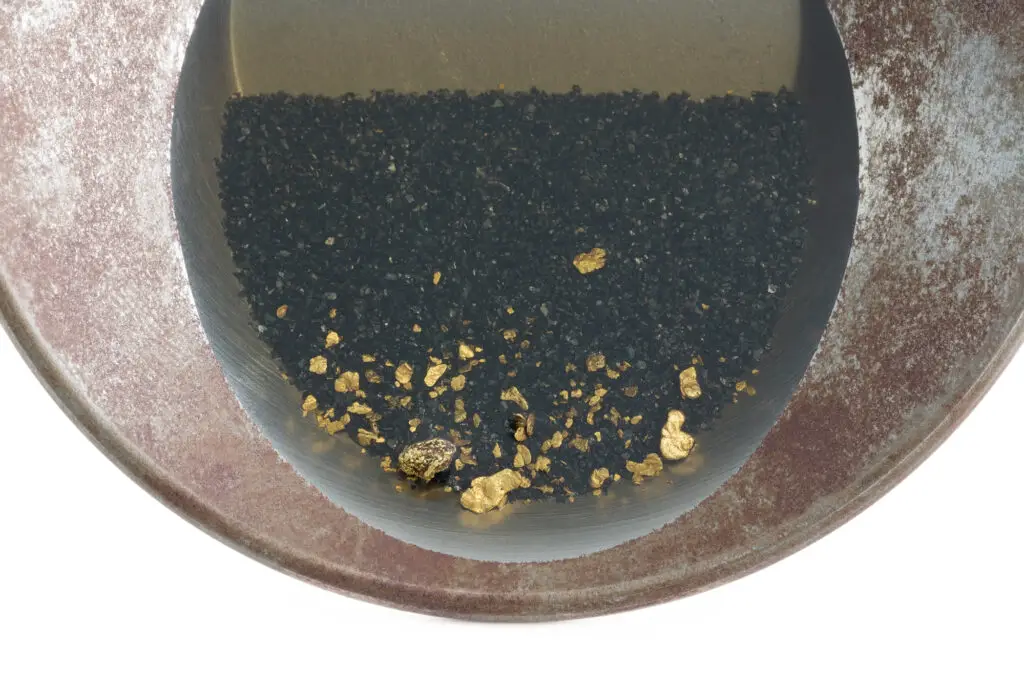In the heart of the expansive Canadian landscape lies a province that is a haven for modern-day gold seekers: Alberta. This province, steeped in the history of the gold rush, offers more than just stunning landscapes and rich culture—it provides an opportunity for an exhilarating, and potentially fruitful, adventure: gold panning.
Despite the technological advancement of our era, the prospect of gold panning still holds a certain allure. The thrill of discovery, the connection with nature, and the tangible reward of golden flakes shimmering in your pan, make this pursuit a rewarding hobby or an exciting family activity.
But before we jump right into our adventure, it is essential to know the rules and regulations surrounding this activity in Alberta. Gold panning may seem a simple endeavor but, like any outdoor pursuit, it is governed by rules intended to ensure safety, promote respect for the environment and uphold the rights of other land users. The regulations vary depending on the location, and ignorance can lead to penalties or inadvertently damaging valuable ecosystems.
Within this blog post, we will unravel the necessary procedures to legally pan for gold, the regulations you need to follow, and the ethics to maintain while panning in Alberta. We will also explore some of the best locales in the province where you can try your luck and maybe strike it rich! Whether you’re a seasoned prospector or a curious beginner, our guide to gold panning in Alberta will provide you with all the information you need to make your gold-seeking adventure safe, legal, and successful.
So, grab your gold pans and let’s embark on this golden journey together into Alberta’s enticing wilderness, a place where the glint of gold still echoes the siren’s call to prospectors from the time of the Gold Rush.

What Are The Rules And Regulations To Pan For Gold In Alberta?
The rules and regulations for recreational gold panning in Alberta are relatively straightforward. However, always check with the Alberta Energy Regulator or other responsible authorities for the most current rules as they could have changed.
Here are some key points to remember:
Recreational Panning vs. Commercial Operations: Recreational gold panning does not require a mineral agreement and does not give the person the exclusive right to prospect for minerals on that site or stake a mineral claim. Commercial operations or larger scale activities require a Placer Mining Licence.
Protected Areas: Gold panning is generally allowed on public lands, but there are protected areas where it is forbidden, such as in national parks, fish habitat, and private lands without the owner’s permission. Always check if the area you’re interested in is available for panning.
Respecting the Environment: Prospecting activities should cause minimal disturbance to the land and should not negatively affect the environment. For example, you can’t cut down trees or bushes, disturb fish habitats, or leave garbage behind.
Equipment Restrictions: The tools allowed for recreational panning are limited to gold pans, hand shovels, and other hand tools. The use of sluices, dredges, or other machinery is not allowed.
Restoration of Sites: Once you’re done panning, it’s crucial to restore the site to its original condition as much as possible. This means refilling any holes you dug and ensuring the area is clean and tidy.
Cultural and Historic Sites: Any historic or cultural artifacts discovered while panning must be left untouched. The Historical Resources Act protects these sites and materials, and it is unlawful to disturb or remove anything.
Remember that the ultimate goal of these regulations is to ensure that recreational activities like gold panning do not negatively impact the environment or other people’s enjoyment of Alberta’s beautiful public lands. Happy panning!
What Is The Biggest Gold Nugget Found In Alberta?
There is no recorded discovery of a particularly large gold nugget in Alberta. Most of the gold found in Alberta is flour gold, which consists of tiny particles rather than large nuggets.
Most of the province’s gold production came from placer deposits in the Edmonton area, which were first discovered along the banks of the North Saskatchewan River in 1893. However, these deposits mostly contained fine gold, not large nuggets.
If you’re looking for stories of massive gold nuggets, British Columbia and Yukon have had some notable finds, including some nuggets weighing several ounces. The largest gold nugget ever found in Canada is the “Nugget No. 5,” which was discovered in the Yukon in 1898 and weighed approximately 72 ounces.
Here Are 20 Places To Pan For Gold In Alberta
Here are some places where you might try your luck at gold panning. Remember, always make sure you have the necessary permissions and abide by any regulations to respect the environment and local communities.
North Saskatchewan River: Near Devon and Edmonton, this river has been a traditional site for gold panning.
Peace River: The Peace River area, especially around Peace River town and Fort Vermillion, is known for its gold.
Athabasca River: The Athabasca region, particularly around the town of Athabasca, is another spot known for gold.
Red Deer River: Near the towns of Red Deer and Drumheller, the Red Deer River is another traditional gold panning site.
Milk River: Near the town of Milk River, this river also has been a site for gold panning.
Oldman River: Near the towns of Lethbridge and Fort Macleod, this river is another site known for its gold.
Sheep River: This river near Okotoks has been known to have placer gold.
McLeod River: Near the town of Whitecourt, this river is known for its gold potential.
Wapiti River: Near the town of Grande Prairie, the Wapiti River is another spot known for gold.
Elbow River: In and around the City of Calgary, this river has been known to yield small amounts of gold.
Highwood River: Near the towns of High River and Longview, this river has been a site for gold panning.
Crowsnest River: Near the towns of Coleman and Blairmore, this river is another site known for its gold.
Smoky River: Near the towns of Grande Cache and Valleyview, this river has been a site for gold panning.
Bow River: In and around the City of Calgary, this river has been known to yield small amounts of gold.
Ghost River: Near the town of Cochrane, this river is known for its gold potential.
Kananaskis River: Near the town of Canmore, the Kananaskis River is another spot known for gold.
Pembina River: Near the towns of Entwistle and Evansburg, this river has been a site for gold panning.
Lesser Slave River: Near the town of Slave Lake, this river is known for its gold potential.
Clearwater River: Near the town of Fort McMurray, the Clearwater River is another spot known for gold.
Beaver Mines Lake: Near the town of Pincher Creek, this area is also known to have some gold deposits.
Remember that even though these places have potential, most of the gold in Alberta is in the form of fine particles. Also, please make sure to check the current regulations and obtain necessary permissions before panning.

